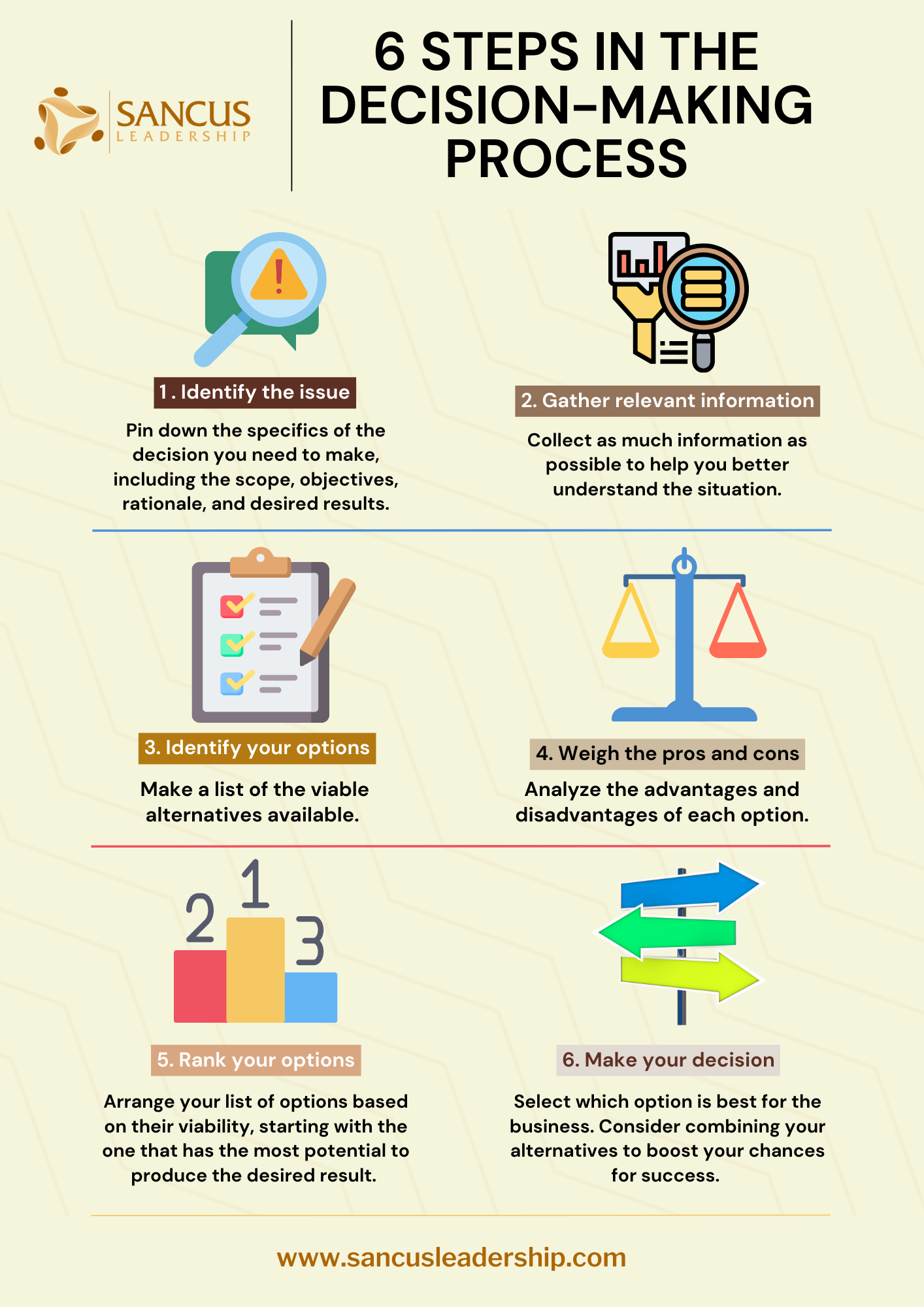Transparency in the decision-making process is critical to cultivating a culture of trust and openness within the team. It assures your employees that you perceive them as valuable group members, not merely your followers. When you let your team members in on making critical decisions for the business, you’re essentially letting them know you’re invested in them and consider them your allies.
Transparent decision-making is about capitalizing on your employees’ unique perspectives to develop the best business decisions. It’s not about being completely open and vulnerable. It’s about inviting your team to play a more vital role in deciding how to help the business thrive.
If you’re interested in learning more about how transparency in decision-making impacts your business or how you can make a transparent team culture work for you, you’re in the right place. This article shares insights on those topics and details on the pros and cons of transparency in decision-making and how to find the perfect balance between openness and discretion. Let’s start!
What Is Transparent Decision-Making All About?

Transparent decision-making ensures clarity, honesty, and openness from the get-go. It’s about letting your team in on all the relevant aspects of the issue at hand, including the options available, the consequences of each option, and the impact these may have on the team.
Transparent decision-making ensures clarity, honesty, and openness from the get-go.
Note that transparency in leadership doesn’t involve sharing all available information with your team. It’s not about discussing every minute detail of the business with your employees and asking for their feedback on practically everything in the company.
Risks are involved in divulging all facts and discussing everything with your team. Full disclosure can lead to dire consequences and disastrous results.
Here are some adverse consequences of being too enthusiastic about transparency and oversharing:
- Your team may begin doubting your abilities as a leader.
- Your team might start harboring doubts about the company’s stability and future.
- You may be blatantly showing vulnerability in your leadership.
- Some team members might take advantage of their role and steer the team toward unfavorable circumstances.
- Some information you share might be irrelevant to the topic.
- What you’re sharing may not be helpful to anyone.
- You might be divulging information reserved only for management.
As a leader, you must be able to moderate what you share and decipher which types of information to relay and which ones not to disclose. This is crucial to keeping your team members in the loop without putting your authority and business security on the line.
As a leader, you must be able to moderate what you share and decipher which types of information to relay and which ones not to disclose.
When you’re ready to stop under or over-sharing information with your team and get used to effectively utilizing the perfect level of transparency to maximize employee engagement and productivity, I suggest you read this article (LINK). It’s a helpful tool for leaders eager to strengthen their decision-making strategies.
What is the Right Level of Transparency as a Leader?

Transparency in leadership doesn’t mean divulging all available information to your team – you must know what to withhold and share. Full transparency may jeopardize your credibility and endanger the business’ stability.
Transparency in leadership can be tricky because you have to strike the right balance between openness and discretion.
Here are some tips on how you can achieve the perfect level of transparency as a leader:
- Set clear expectations. This gives employees a clear view of where the team is headed.
- Share the good and the bad. Keep your employees in the loop while being mindful of oversharing. This gives them a clearer picture of what’s happening in the business so they’re not blindsided in case surprises arise.
- Welcome employee feedback. By making your employees feel valued, you encourage and empower them to be invested in the team’s growth and success.
- Steer clear of indecisiveness. Even if you consider your team’s input when making decisions, make it clear that, as their leader, you still have the final say. Indecisiveness can undermine your authority and discredit you as the team’s primary mover and shaker.
- Be consistent. Transparent decision-making isn’t just a one-shot deal. Strive to teach it in your daily business operations.
| Tips on how you can achieve the perfect level of transparency as a leader | Description |
| Set clear expectations | Establishing these expectations not only builds trust but also ensures that team members are on the same page, reducing misunderstandings and fostering a collaborative environment. |
| Share the good and the bad | By openly discussing successes, achievements, and favorable outcomes, leaders inspire a sense of accomplishment and motivation among team members. |
| Welcome employee feedback | When leaders prioritize and genuinely value employee input, they pave the way for enhanced transparency, better relationships, and more effective collaboration within the organization. |
| Steer clear of indecisiveness | This fosters a culture of accountability, empowerment, and effective collaboration, ultimately contributing to a transparent and efficient work environment. |
| Be consistent | This commitment to uniformity in transparency reinforces the leader’s credibility, enabling a cohesive and productive work environment built on trust and mutual understanding. |
So does this mean it’s okay for leaders to withhold information and lie to their team members?
Not exactly. Withholding information is permissible, anticipated, and often necessary, but being dishonest and deceitful is not. At Sancus Leadership, we stand by the value of openness and honesty in the team and finding the perfect level of transparency in leadership, especially if you’re keen on earning your team members’ loyalty and trust.
How Transparent Decision-Making Impacts a Business

As a leader, you must make daily choices that directly impact your business operations and success. It can be a daunting responsibility, but you can boost your chances of making the best choices by including your team in decision-making. This allows you to reap the benefits of diversity — having a group of unique individuals from different backgrounds who can give you different perspectives on any subject.
As a leader, you must make daily choices that directly impact your business operations and success.
Some leaders might shun the idea of bringing their team members into the conversation because there will undoubtedly be a clash of opinions and complicated scenarios, most of which can be avoided if you single-handedly go about the task in the first place.
However, being intolerant or oblivious to other people’s views narrows your options and adversely affects how well your business can achieve its full potential. It also dramatically affects how efficiently you can develop the best solutions to varying problems.
Diversity allows you to gather and appreciate new information, ideas, and opinions that you would probably not consider yourself otherwise. It can alter the way you think and perceive things. It can positively impact your business by helping you make well-informed decisions and solve problems more innovatively.
Is Transparency in Decision-Making Worthwhile?

You might wonder if all the effort and risks that go into practicing transparency when managing your team is worthwhile. Is it worth exposing your vulnerability so that you can gather the input of others? Doesn’t being transparent portray you as a weak leader, incapable of making decisions on your own?
Willfully handling all responsibilities independently may lead to unnecessary stress, burnout, and a higher risk of making damaging, one-sided choices for the business. Gone are the days when leaders are expected to carry the brunt of decision-making.
According to a 2018 US study involving more than 1,400 workers, 80% of employees want to be in the loop about decisions being made in the company. This staggering percentage indicates that employees prefer working with leaders who are transparent and eager to tap them when making significant decisions for the team.
Another 2013 study uncovered how crowdsourcing is a powerful tool for leaders to gather exciting, groundbreaking ideas from within the organization. Considering your team’s insights can help you make sound decisions that address more aspects of the business that you otherwise might have overlooked.
These findings suggest that decision-making transparency is worthwhile and productive because it is what employees want and expect from their leaders. It helps build trust, morale, and productivity — it helps keep your employees happy. Furthermore, it allows leaders to distribute the burden of steering the team in the right direction and boost their chances of coming up with the best solutions for various dilemmas.
Are you eager to eliminate all doubts about transparency in decision-making and find out just how effective it is in building trust and improving employee retention? Then, please read this article (LINK) to dive deeper into its merits and impact in effectively managing a team.
Ways To Establish Transparent Decision-Making in Your Team

Leaders are tasked with making decisions practically every day for the team. These can range from mundane choices to making transformative decisions for the business. In both instances, it is crucial to always go for the best possible option, which benefits the team and contributes to its development and success.
Some leaders mistakenly think that decision-making processes are solely their responsibility. Although this may hold to a certain extent (because the burden of steering the team toward the right direction rests on their shoulders), it is a wise move to solicit the input of others so you can make better decisions. And who better to turn to for help than your team?
The steps in the decision-making process are quite simple:
- Identify the issue. Pin down the specifics of the decision you need to make, including the scope, objectives, rationale, and desired results.
- Gather relevant information. Collect as much information as possible to help you better understand the situation. Gather data from internal and external sources to gain a broader, more well-rounded perspective.
- Identify your options. Make a list of the viable alternatives available.
- Weigh the pros and cons. Analyze the advantages and disadvantages of each option. Imagine what will happen if each of the alternatives is carried out, and make a chart of the pros and cons.
- Rank your options. Arrange your list of options based on their viability, starting with the one that has the most potential to produce the desired result.
- Make your decision. Select which option is best for the business. Consider combining your alternatives to boost your chances for success.

So, where does transparency fit in all these?
Transparency should be observed as you go through each step of the decision-making process. Get your team members involved. Uncover each individual’s strengths to know the best ally for various circumstances.
Suppose you can’t wait to stop carrying all decision-making responsibilities and start sharing the burden with your team to make them feel more invested in the business. In that case, I advise you to read this article (LINK). It can help you and your team make the best decisions to steer the business in the right direction.
Here’s a video quickly explaining the importance of leaders providing a lot of transparency in decision-making.
Key Takeaways
Whether you’re thinking of implementing new company rules, adjusting the budget, or reorganizing the team, your leadership decisions always directly impact your employees. One way to boost your chances of making the right choices is to include them in the process. Decision-making transparency can help you determine the best options for your team.
As a leader, knowing just how much information you should share is crucial. Remember, transparency isn’t about being completely open and vulnerable. Instead, it’s about fostering a culture of collaboration, synergy, and integrity within your team.



